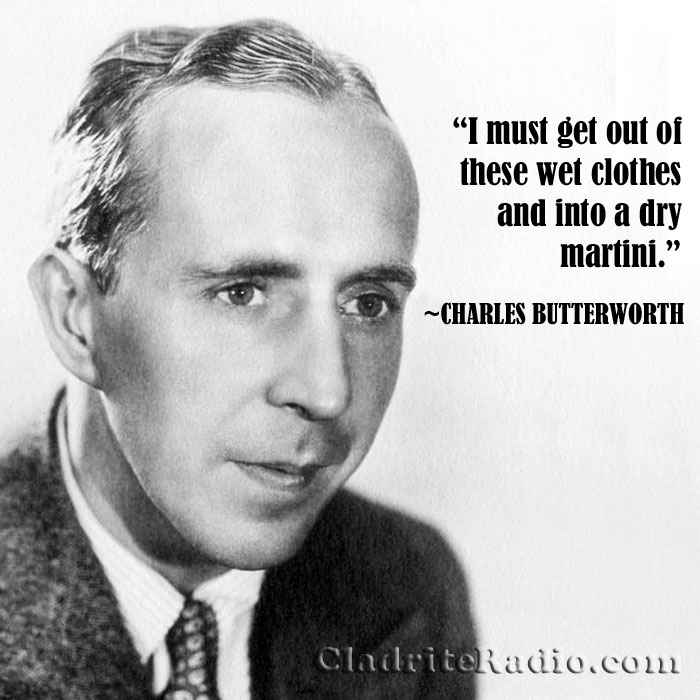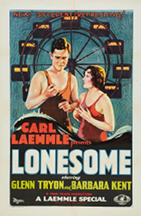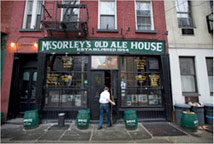Here are 10 things you should know about Charles Butterworth, born 124 years ago today. He’s one of those character actors of the 1930s and ’40s who made movie comedies that much funnier.
Tag: New York Times
10 Things You Should Know About Herbert Marshall
Here are 10 things you should know about Herbert Marshall, born 132 years ago today. He enjoyed success on the stage, in pictures, in radio and on television.
Happy 120th Birthday, Charles Butterworth!
Charles Butterworth was born 120 years today in South Bend, Indiana. He’s in the rarefied company of greats like Roland Young, Charles Ruggles and Edward Everett Horton when it comes to making 1930s comedies just that much funnier. Here are ten CB Did-You-Knows:
- Butterworth earned a law degree from the University of Notre Dame, but never practiced, instead entering the journalism field.
- He worked as a journalist for the Chicago American. During those years, he established friendships with Heywood Hale Broun and humorist Frank Sullivan, who was instrumental in Butterworth getting radio work.
- When Butterworth first arrived in New York, he worked for the New York Times as a circulation department canvasser.
- Butterworth also worked as a secretary to author J. P. McEvoy, who was at the time writing the book for a musical called Americana. This gave Butterworth an entrée into the world of theater. He would go on to appear in several Broadway musicals of the 1920s, among them Allez Oop, Good Boy, Sweet Adeline and Flying Colors.
- His first credited film appearance (following a couple of brief, uncredited appearances) was in The Life of the Party (1930).
- Butterworth was known to be adept with humorous ad libs, so much so that some of the screenwriters he worked with in Hollywood came to rely on his ability to fill out an underwritten part with pithy lines of his own making.
- Butterworth was very close friends with fellow humorist Robert Benchley. Benchley is sometimes credited with the line quoted in today’s quote graphic, but he said Butterworth, who spoke the line in Every Day’s a Holiday (1937), but is said to have orginally ad-libbed the quip after falling into a pool at a party.
- Butterworth’s familiar screen character is said to have been the inspiration for cereal mascot Cap’n Crunch.
- He died in 1946 in a single-car automobile accident on Sunset Boulevard. It’s been suggested in some corners that his death was not accidental, that he was despondent over the passing of his pal Benchley some months earlier, but that’s not ever been proven.
- At the time of his death, Butterworth was engaged to actress Natalie Schafer, who would later be cast as Mrs. Thurston Howell III on the television sitcom Gilligan’s Island.
Happy birthday, Charles Butterworth, wherever you may be!

Goodbye to another glorious gal: Barbara Kent
 Some years ago, we had the pleasure of viewing Lonesome, a silent-talkie hybrid that was released in 1928. It’s not an easy movie to catch; as far as we know, the George Eastman House in Rochester, New York, has one of the few extant prints. (Someone seems to have loaded Lonesome up on YouTube, and we suppose that’s better than not seeing it at all, but just barely.)
Some years ago, we had the pleasure of viewing Lonesome, a silent-talkie hybrid that was released in 1928. It’s not an easy movie to catch; as far as we know, the George Eastman House in Rochester, New York, has one of the few extant prints. (Someone seems to have loaded Lonesome up on YouTube, and we suppose that’s better than not seeing it at all, but just barely.)
Lonesome could not be more charming. Its appeal is based in large part on the fact that much of it was filmed on Coney Island, and any glimpse of that magical setting as it was in the 1920s is to be treasured.
But the plot of the picture is engaging, too. It tells the tale of two lonely Manhattanites who experience a chance meeting at Coney Island and go on to spend a magical day together before getting separated that evening, with neither having learned the other’s last name. In a city of millions, will they ever manage to find each other? (If you think we’re going to tell you how it turns out, you can think again. No blabbermouths, we.)
Lonesome was originally released as a silent picture, but with all the fuss over the new sound technology, it was decided to bring back all involved parties to film three scenes with synchronized music and dialogue. So it’s not quite a silent and not quite a talkie.
But it’s certainly delightful, in our opinion, and we encourage you, if you ever have the opportunity, to see it (in a theatre and not streaming online, if at all possible).
 But you might well be wondering why we’re mentioning what is today a rather obscure picture now? Well, we’re sad to report that it’s because the movie’s leading lady, Barbara Kent, one of Universal Studios’ original contract stars and the final surviving WAMPAS Baby Star of 1927, died a week ago yesterday at the age of 103.
But you might well be wondering why we’re mentioning what is today a rather obscure picture now? Well, we’re sad to report that it’s because the movie’s leading lady, Barbara Kent, one of Universal Studios’ original contract stars and the final surviving WAMPAS Baby Star of 1927, died a week ago yesterday at the age of 103.
The Canadian-born Kent (her birthname was Barbara Cloutman) was not, admittedly, the biggest of names, even at the height of her career, but she made her mark, making eight or nine silents before successfully navigating the switch to talking pictures. She made 25 sound movies following her appearance in Lonesome, but retired from acting in 1935.
Among Kent’s most notable films were her screen debut in Flesh and the Devil (1926), with John Gilbert and Greta Garbo; a pair of starring roles opposite Harold Lloyd, in 1929’s Welcome Danger and Feet First a year later; a supporting role in Indiscreet (1931), which starred Gloria Swanson; and Emma, which featured Myrna Loy and Marie Dressler.
 In the course of her nine-year career, Kent also worked alongside Douglas Fairbanks Jr., Richard Barthelmess, Edward G. Robinson, Charles “Buddy” Rogers, Andy Devine, James Gleason, Ben Lyon, Gilbert Roland, Noah Beery, Victor Jory, Dickie Moore, Monte Blue, Wallace Ford, Ward Bond, Arthur Lake, and Rex the Wonder Horse. That may not qualify as a Hall of Fame roster of co-stars, but many an actress has done worse.
In the course of her nine-year career, Kent also worked alongside Douglas Fairbanks Jr., Richard Barthelmess, Edward G. Robinson, Charles “Buddy” Rogers, Andy Devine, James Gleason, Ben Lyon, Gilbert Roland, Noah Beery, Victor Jory, Dickie Moore, Monte Blue, Wallace Ford, Ward Bond, Arthur Lake, and Rex the Wonder Horse. That may not qualify as a Hall of Fame roster of co-stars, but many an actress has done worse.
After retiring, Kent refused virtually all interviews about her years in Hollywood—one notable exception was the time she afforded author Michael G. Ankerich, who profiled Kent in The Sound of Silence: Conversations with 16 Film and Stage Personalities Who Bridged the Gap Between Silents and Talkies—as she settled into a successive pair of happy marriages—first to Harry Edington, a Hollywood agent, whom she wed in 1932, and then, some years after Edington’s death in 1949, she married Jack Monroe, a Lockheed engineer. Aside from evading would-be interviewers, Kent reportedly spent her free time in her golden years as a golfer and a pilot.
For more on Kent’s life and career, give this New York Times obit a look.
Dust to dust
 Ever feel a tinge of sorrow when you pulled out a dustrag and a can of Pledge with the intention of restoring the sheen to your furniture? Ever mourn the dust that you swiped off a coffee table, a bookshelf, a window sill?
Ever feel a tinge of sorrow when you pulled out a dustrag and a can of Pledge with the intention of restoring the sheen to your furniture? Ever mourn the dust that you swiped off a coffee table, a bookshelf, a window sill?
You haven’t?
Well, you’ll mourn the dispatching of this dust, as detailed by Dan Barry in the New York Times:
On Sunday morning, before the ancient doors of McSorley’s Old Ale House opened once again to spill that beer-and-sawdust aroma upon an East Village sidewalk, the owner took on a sorrowful job that in good conscience he could not leave to any of his employees. Too close to tempting the fates.
But it had to be done. The New York City health department was dropping hints as loud as the clatter of mugs on a Saturday night.
So, with heavy heart, the proprietor, Matthew Maher, 70, climbed up a small ladder. With curatorial care, he took down the two-dozen dust-cocooned wishbones dangling on an old gas lamp above the storied bar counter. He removed the clouds of gray from each bone. Then he placed every one of the bones, save for those that crumbled at his touch, back onto the gas lamp — where, in the context of this dark and wonderful establishment, they are not merely the scrap remains of poultry, but holy relics….
